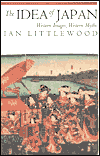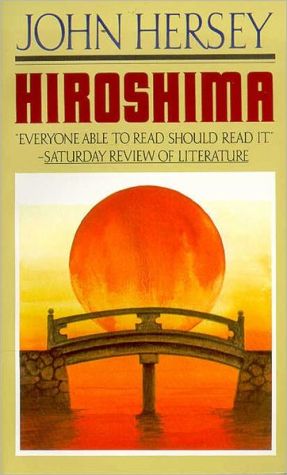The Idea of Japan: Western Images, Western Myths
A hundred and fifty years ago Japan was a country so remote from the West that it might have existed on another planet. Today its influence touches all of us, yet in the West we know almost as little about it as we did in the days when Henry Adams, visiting Japan, called it “a toy-world.” Ian Littlewood’s Idea of Japan offers a framework for making sense of a culture that puzzles us. His book is about the Japan we encounter when we turn on the television, open a newspaper, or flip through a...
Search in google:
In a history filled with examples and anecdotes, Mr. Littlewood shows how closely our current images of the Japanese are tied to the cliches of the past. A sharp and amusing guide to cultural myths and misunderstandings. --Ian Buruma Publishers Weekly British author Littlewood maintains that images of Japan in the West have been dominated by four main stereotypesthe Japanese as robot-like, less than fully human Aliens; as Aesthetes, supersensitive and addicted to picturesque beauty; as Butterflies, exemplified by the demure, remote geisha or the average Japanese woman, pictured as submissive and delicate; and finally as Samurai, cruel, fanatical warriors. Using photos, advertisements, posters and drawings, plus the novels of Michael Crichton, Ian Fleming, Pierre Loti, Clive James and Eric Van Lustbader and writings by Lafcadio Hearn, James Michener and Nikos Kazantzakis, this delightful, penetrating study dismantles clichd Western images of the Japanese by demonstrating how they are tailored to Occidental needs and fears. The samurai stereotype, argues Littlewood (The Writings of Evelyn Waugh), melds into the contemporary image of "samurai in suits," ruthlessly efficient businessmen bent on taking over the world. (Sept.)
List of IllustrationsPrefaceAcknowledgements1A Question of Category32A Marked Resemblance to Monkeys133Strange Forms of Knowledge274Glorious Death355An Unfathomable Planet456A Realised Fairyland617Force of Circumstance708A Place to Meditate789A Natural Infirmity8910The Inhuman Aesthetic9811A Bevy of Damsels10912Butterflies with Hearts12013A Lewd People12514Cultural Penetration14215A Streak of Violence15916The Sadist17017Bushido18418Samurai in Suits19419Back to the Yellow Peril?208Notes213Select Bibliography227Index232
\ Publishers Weekly - Publisher's Weekly\ British author Littlewood maintains that images of Japan in the West have been dominated by four main stereotypesthe Japanese as robot-like, less than fully human Aliens; as Aesthetes, supersensitive and addicted to picturesque beauty; as Butterflies, exemplified by the demure, remote geisha or the average Japanese woman, pictured as submissive and delicate; and finally as Samurai, cruel, fanatical warriors. Using photos, advertisements, posters and drawings, plus the novels of Michael Crichton, Ian Fleming, Pierre Loti, Clive James and Eric Van Lustbader and writings by Lafcadio Hearn, James Michener and Nikos Kazantzakis, this delightful, penetrating study dismantles clichd Western images of the Japanese by demonstrating how they are tailored to Occidental needs and fears. The samurai stereotype, argues Littlewood (The Writings of Evelyn Waugh), melds into the contemporary image of "samurai in suits," ruthlessly efficient businessmen bent on taking over the world. (Sept.)\ \ \ \ \ Library JournalBoth of these books strive to promote a better understanding of Japan among Western readers. Littlewood (English, Sussex Univ., England) does so by examining popular Western impressions of Japan from 16th-century Jesuits through 19th-century visitors to present-day views using journals, books, and movies. These impressions formed stereotypes of Japan in Western minds. On the one hand, there is the aesthetic Japan of politely civilized, bowing people; on the other is the aggressive, violent Japan. Littlewood believes that relying on these and other simplistic views of Japan leads to misunderstandings and that "the only prospect of real change lies in the gradual humanistic effect of individual contact." In Japan Encountered, Wright (history, Univ. of St. Thomas, Minnesota) has put together 16 essays dealing with Westerners in Japan. The individuals selected represent missionaries, diplomats, soldiers, architects, writers, and travelers, for example, St. Francis Xavier, Will Adams (Anjin-san of Clavell's Shogun), Commodore Perry, Frank Lloyd Wright (who designed Tokyo's Imperial Hotel), Douglas MacArthur, Ruth Benedict, and James Michener. Planned as a supplemental text for a college course, the work includes study and discussion questions. Academic libraries that support Asian studies programs will benefit from acquiring Japan Encountered, while The Idea of Japan is recommended for academic libraries and larger public libraries.William L. Wuerch, Univ. of Guam\ \ \ BooknewsDrawing from a wide range of sources, from the accounts of Jesuit missionaries to images of contemporary Hollywood, Littlewood (English, Sussex U., England) provides a fascinating exploration of Japanese life and shows why we have too long seen Japan only as a projection of our own fears, dreams, and desires. Annotation c. by Book News, Inc., Portland, Or.\ \ \ \ \ Kirkus ReviewsAn Englishman's intermittently intriguing audit of Western attitudes toward Japan and the Japanese, from the first contacts in the 16th century to the present day.\ Drawing on his own experiences and on anecdotal evidence culled from the popular as well as fine arts, Littlewood (English/Sussex Univ., England) offers a well-ordered if deadly earnest survey that raises as many questions as it answers. Citing works by a pride of literary lions (Pearl Buck, James Clavell, Ian Fleming, Lafcadio Hearn, Rudyard Kipling, Arthur Koestler, Pierre Loti, Eric Lustbader, James A. Michener, Robert Stone, et al.), he documents how the Western world's impressions of Japan have been by turns patronizing and ethnically prejudiced. From the Meiji Restoration through the turn of the 20th century, the author notes, European and North American writers depicted the island nation as a timeless aesthetic wonderland whose doll-like people had a revered emperor, decidedly quaint customs, and a shockingly permissive approach to sexual matters. When Japan bested Russia in a real war, Littlewood observes, the Occident's perceptions of the country's capabilities changed, albeit grudgingly. With the advent of WW II the views of the Allies declined to forthright racism, and today, the author says, Japan has come full circle, being viewed as an economic Yellow Peril. He concludes that there's no telling how long the current version of Japan—as a threatening, regimented nation of suited samurai—may endure in the West. Littlewood makes a good job of recording the cultural stereotypes that have probably precluded closer (or less adversarial) relations.\ What he fails to do, however, is to probe Japan's consensus- oriented, demonstrably homogeneous, and arguably xenophobic society to determine what residual validity the clichés might have. The result is a survey with no more depth or breadth than a reflecting pool.\ \ \








